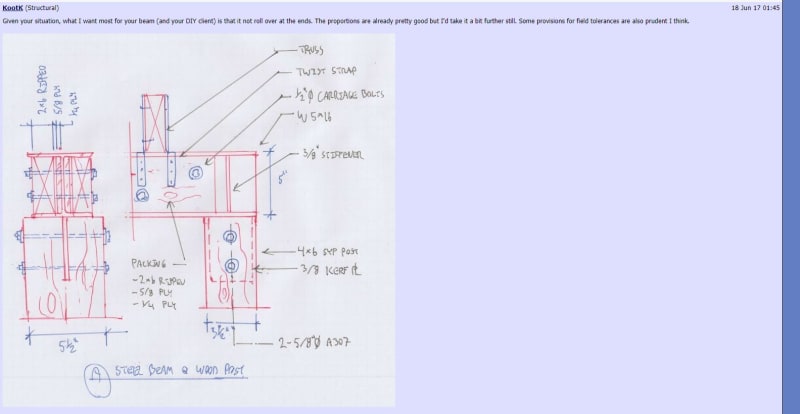My architect is telling me that he will not allow me to install a horizontal load-bearing steel beam that is supported by 3 2x6 existing vertical posts on either side. The posts sit on the foundation. I am being told that a steel beam can only rest on a steel post. (Something to do with different rates of expansion and contraction?)
I would prefer to have them supported by these wood posts, rather than rip out most of the wall to install vertical steel posts.
Should I be pushing back on getting him to allow me to rest the horizontal steel beam on vertical wood posts?
Based in Toronto, in case temperature variation is a factor...
I would prefer to have them supported by these wood posts, rather than rip out most of the wall to install vertical steel posts.
Should I be pushing back on getting him to allow me to rest the horizontal steel beam on vertical wood posts?
Based in Toronto, in case temperature variation is a factor...

